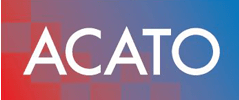
Crafting the Perfect ISO 27001 Internal Audit Report
An ISO 27001 internal audit report is essential for organizations seeking ISO 27001 certification. Many face challenges in creating reports that accurately reflect risk management and asset protection. This guide will cover the purpose of the report, key components like the executive summary, and best practices for distribution. By understanding these elements, readers will enhance their audit reporting skills, address common pitfalls, and contribute to continuous improvement within their organizations. Engaging with this content will lead to clearer, more impactful reports that meet the demands of the ISO 27001 certification process.
Essential Takeaways for Crafting an Effective ISO 27001 Audit Report
- An ISO 27001 internal audit report evaluates an organization’s information security management system (ISMS)
- Clear objectives and scope are vital for conducting effective internal audits and ensuring compliance
- Actionable recommendations enhance information security and address identified vulnerabilities within organizations
- Engaging stakeholders early fosters acceptance and improves the overall success of audit findings
- Regular feedback mechanisms help refine the internal audit process and promote continuous improvement
Understanding the Purpose of an ISO 27001 Internal Audit Report

The purpose of an ISO 27001 internal audit report is to evaluate an organization’s information security management system (ISMS) against the requirements set by the International Organization for Standardization as part of the iso 27001 certificationprocess. This assessment helps determine whether existing policies and procedures align with the established methodology for risk management and compliance. It highlights areas where improvements can enhance overall security posture and governance.
Conducting internal audit activities is essential for identifying compliance gaps and measuring the effectiveness of security controls. The audit report serves as a formal document that outlines findings and recommendations, providing valuable insights for stakeholders. This process requires a specific skill set to ensure that all elements of the ISMS are thoroughly examined and assessed.
Ultimately, the ISO 27001 internal audit report functions as a roadmap for continuous improvement in an organization’s information security practices. It enables organizations to refine their policies, making necessary adjustments to mitigate risks and comply with international standards. This proactive approach not only serves to enhance security maturity but also satisfies client requirements and regulatory expectations.
An ISO 27001 internal audit report serves as a critical tool for understanding security strengths and weaknesses. Now, let’s explore the key components that make such a report effective and actionable.
Key Components of an Effective ISO 27001 Internal Audit Report

Effective ISO 27001 internal audit reports contain crucial components that enhance governance and support the continual improvement process. This includes an executive summary that outlines key findings, objectives, and the audit‘s scope. The report should detail the methodology employed, specify observations related to potential data breaches or failures, and provide actionable recommendations for improvement as they relate to the supply chain.
By systematically addressing these elements, organizations can better understand their security posture and enhance overall information management practices, thereby safeguarding against risks.
Executive Summary Requirements
An effective executive summary in an ISO 27001 internal audit report is essential for communicating the overall evaluation of the information security management system (ISMS) to stakeholders. This document should clearly outline key findings, objectives, and the scope of the audit to assist the chief information security officer in conveying necessary actions for regulatory compliance. Furthermore, it should highlight significant observations that external auditors might focus on, ensuring that all critical elements are addressed clearly and concisely.
| Component | Description |
|---|---|
| Objectives | Clarify the purpose of the audit and its alignment with organizational goals. |
| Key Findings | Summarize the most critical evaluation results regarding the ISMS. |
| Scope | Detail the boundaries of the audit and areas examined. |
| Recommendations | Provide actionable insights for enhancing security and achieving compliance. |
Objectives and Scope of the Audit
The objectives and scope of an ISO 27001 internal audit are fundamental components that establish the framework for inspection and evaluation of an organization‘s information security management system (ISMS). Clearly defining these elements ensures that the audit aligns with the organization‘s risk management strategies and addresses customer needs for compliance with international standards. By incorporating guidelines from authoritative bodies such as the National Institute of Standards and Technology, the audit can effectively assess existing practices while fostering standardization in security protocols.
| Component | Description |
|---|---|
| Objectives | Clarify the purpose of the audit and its alignment with organizational goals. |
| Scope | Detail the boundaries of the audit and areas examined. |
Methodology and Approach Details
The methodology for conducting an ISO 27001 internal audit revolves around a structured approach that emphasizes training and the expertise of the audit team. By preparing resources that underscore the organization’s risk appetite, auditors can effectively evaluate whether information security controls are adequate and aligned with established standards. Utilizing proven techniques and frameworks ensures comprehensive assessment, enabling organizations to pinpoint vulnerabilities and make informed decisions that bolster their security posture.
Findings and Observations Specification
In the findings and observations section of an ISO 27001 internal audit report, the emphasis lies on thorough gap analysis and clear documentation of observations related to the organization‘s risk assessment practices. Highlighting any potential conflicts of interest within contracts or partnerships is essential, as such issues can undermine the integrity of the information security management system. By precisely detailing these findings, organizations can better understand vulnerabilities, enabling them to implement corrective measures that enhance compliance and strengthen overall security posture.
Recommendations for Improvement
Providing actionable recommendations for improvement is a critical aspect of an ISO 27001 internal audit report. Internal auditors should emphasize fostering a culture of information security management within the organization. This involves ensuring that employees understand the importance of confidentiality and are trained to follow best practices in information handling. By incorporating practical examples and strategies for continuous learning, organizations can enhance their security framework and address identified vulnerabilities effectively:
| Recommendation | Description |
|---|---|
| Enhance Training Programs | Develop comprehensive training for staff on information security practices. |
| Strengthen Policies | Review and update confidentiality policies to reflect current risks. |
| Foster a Security Culture | Encourage open dialogue about security concerns among employees. |
| Regular Audits | Conduct regular internal audits to reassess vulnerabilities. |
An effective audit report serves a clear purpose, guiding organizations toward better security practices. Understanding the right structure can transform these reports from mere documents into powerful tools for improvement.
Structure and Format for ISO 27001 Internal Audit Reports

Creating a well-structured ISO 27001 internal audit report requires attention to several key components. The title page sets the report’s context, while a well-organized table of contents allows stakeholders to navigate easily. To enhance credibility, including appendices with supporting documentation such as checklists and backupevidence is essential for thorough surveillance of the organization‘s compliance.
These structured elements not only improve clarity but also ensure that the report effectively communicates findings and recommendations. Establishing these components paves the way for a comprehensive audit that meets the needs of all stakeholders involved.
Title Page Essentials
The title page of an ISO 27001 internal audit report serves as the first point of contact for stakeholders, making it essential to include key details such as the audit‘s scope and frequency. This page should clearly state the purpose of the internal audits, outlining the specific areas examined and ensuring that relevant evidence is presented succinctly. By carefully crafting the title page, organizations can set the tone for the report, facilitating better understanding and encouraging transparency regarding the audit process.
Table of Contents Organization
Organizing the table of contents in an ISO 27001 internal audit report is crucial for facilitating navigation and enhancing understanding among stakeholders. A well-structured table of contents provides a clear overview of the report’s sections, highlighting key components related to data security and compliance with certification standards. By incorporating automation tools to streamline the creation process, organizations can ensure that their reports are both comprehensive and accessible, ultimately improving the effectiveness of their internal audits.
Appendices for Supporting Documentation
Appendices in an ISO 27001 internal audit report serve as essential resources that support the primary findings and enhance the overall credibility of the document. These appendices can include checklists, process maps, or raw data that provide detailed backing for the observations made during the audit. By incorporating these supporting documents, organizations offer stakeholders a clearer picture of the audit process and findings, facilitating informed decision-making regarding their information security management system (ISMS):
- Inclusion of checklists to outline the audit criteria.
- Process maps to visualize information security workflows.
- Raw data that backs compliance claims and findings.
A well-structured report lays the groundwork for understanding. Next, discover how to craft messages that resonate clearly and powerfully with your audience.
Tips for Writing Clear and Impactful Audit Reports

Using plain language and clear terminology is essential for the effectiveness of an ISO 27001 internal audit report. This ensures that all stakeholders understand the findings and recommendations without ambiguity. Incorporating visual aids and data presentation enhances comprehension, making complex information more accessible. Additionally, maintaining a professional tone throughout reinforces the report’s credibility and importance, ensuring the content resonates with its audience.
Using Plain Language and Clear Terminology
Using plain language and clear terminology is vital for crafting ISO 27001 internal audit reports that effectively communicate findings to diverse stakeholders. This approach eliminates ambiguity, ensuring every reader comprehends critical insights regarding the information security management system (ISMS). For instance, auditors should avoid industry jargon when possible and opt for straightforward terms to describe security measures and compliance requirements, making the report accessible to both technical and non-technical audiences alike.
Incorporating Visual Aids and Data Presentation
Incorporating visual aids and effective data presentation into an ISO 27001 internal audit report greatly enhances the readers’ comprehension of complex information. Utilizing charts, graphs, and infographics helps to clarify audit findings, making it easier for stakeholders to grasp critical insights at a glance. For instance, displaying compliance metrics through visual representation can highlight trends and areas requiring attention, enabling organizations to address vulnerabilities more efficiently.
Maintaining a Professional Tone Throughout
Maintaining a professional tone throughout an ISO 27001 internal audit report is essential for conveying credibility and authority. A professional tone helps ensure that findings and recommendations are taken seriously by stakeholders, making it easier for organizations to implement necessary changes. For instance, using precise language and avoiding jargon allows diverse audiences to understand critical insights, ultimately fostering constructive dialogue about enhancing the information security management system (ISMS).
Once the audit report is complete, the next step is crucial: sharing it. How an organization distributes this report can make all the difference in driving change and compliance.
Best Practices for Distributing ISO 27001 Internal Audit Reports

Identifying stakeholders and audience is essential for the effective distribution of ISO 27001 internal audit reports. Utilizing secure channels for sharing enhances the confidentiality of sensitive information. Additionally, ensuring timely distribution enables stakeholders to address findings promptly. These practices ensure the audit report not only reaches the right individuals but also supports continuous improvement in information security management.
Identifying Stakeholders and Audience
Identifying stakeholders and the audience is a critical step in effectively distributing ISO 27001 internal audit reports. Stakeholders may include management, IT security personnel, compliance officers, and external regulators, all of whom have varying interests in the findings. Understanding their specific needs ensures that the report provides relevant insights, thus facilitating informed decision-making and enhancing ongoing improvements in the organization‘s information security management system.
Utilizing Secure Channels for Sharing
Utilizing secure channels for sharing ISO 27001 internal audit reports is crucial in safeguarding sensitive information and ensuring compliance with data protection requirements. Organizations should prioritize encrypted email communications or dedicated secure file-sharing platforms to mitigate risks related to unauthorized access. By implementing these secure methods, stakeholders can promptly receive vital audit findings while maintaining the integrity of the information security management system.
Ensuring Timely Distribution
Ensuring timely distribution of ISO 27001 internal audit reports is vital for maintaining organizational momentum in addressing security concerns. Stakeholders must receive these reports promptly to enable swift action on identified issues, thereby enhancing compliance with established security standards. By streamlining communication processes and setting clear deadlines for report delivery, organizations can significantly improve their response times, ultimately supporting a proactive approach to information security management.
Even the best reports face hurdles in the real world. Understanding these common challenges and finding solutions will strengthen the audit process and enhance compliance.
Common Challenges in ISO 27001 Internal Audit Reporting and Solutions

Addressing common challenges in ISO 27001 internal audit reporting is essential for achieving effective outcomes. Issues such as lack of data clarity can hinder the understanding of audit findings. Handling resistance from stakeholders may impact implementation, while maintaining compliance with reporting standards ensures credibility. These key areas will be explored to provide practical insights into overcoming obstacles in crafting an effective internal audit report.
Addressing Lack of Data Clarity
Addressing the lack of data clarity in ISO 27001 internal audit reporting is crucial for ensuring that stakeholders fully comprehend audit findings. Often, unclear or ambiguous data can lead to misunderstandings, hinder effective decision-making, and stall the implementation of necessary improvements. To mitigate this issue, auditors should present data in a straightforward manner, incorporating visual aids such as charts and graphs to illustrate key insights succinctly:
| Challenge | Solution |
|---|---|
| Lack of data clarity | Utilize visual aids and straightforward language to enhance understanding. |
| Misleading audit findings | Ensure consistent terminology and clear metrics in reports. |
| Stakeholder engagement | Encourage feedback on report clarity to identify pain points. |
Handling Resistance From Stakeholders
Handling resistance from stakeholders during the ISO 27001 internal audit process is a common challenge that organizations encounter. Stakeholders may perceive the audit as a threat to their existing workflows or might lack understanding of the audit‘s purpose. To mitigate this resistance, it is essential to communicate the benefits of the audit process clearly, emphasizing how it enhances information security and aligns with organizational goals. Engaging stakeholders early on, providing transparent updates, and addressing their concerns directly can foster a collaborative atmosphere that encourages acceptance of findings and recommendations:
- Identify specific stakeholder concerns to address during the audit process.
- Communicate the benefits of the internal audit clearly and regularly.
- Engage stakeholders early to promote collaboration and acceptance.
- Provide transparent updates and address resistance proactively.
Maintaining Compliance With Reporting Standards
Maintaining compliance with reporting standards in ISO 27001 internal audits is essential to ensure that findings are credible and actionable. Organizations must adhere to both international guidelines and internal protocols to present an accurate assessment of their information security management system (ISMS). Regular training for audit teams on these standards, combined with internal reviews of the audit processes, can help organizations mitigate discrepancies and enhance the report’s reliability, ultimately fostering stakeholder trust and facilitating continuous improvement.
The challenges faced in ISO 27001 internal audit reporting reveal the need for adaptation and growth. Embracing feedback from these reports can lead to meaningful improvements, shaping stronger security practices for the future.
Continuous Improvement Through Audit Reporting Feedback

Gathering feedback mechanisms is essential for refining ISO 27001 internal audit reports. Organizations can implement changes based on recommendations to enhance their information security management systems effectively. Moreover, tracking progress over time ensures continuous improvement and accountability. Each of these elements is crucial for creating a comprehensive audit report that meets stakeholder expectations and drives security enhancements.
Gathering Feedback Mechanisms
Gathering feedback mechanisms is essential for refining the ISO 27001 internal audit report process. Implementing structured methods for collecting input from stakeholders allows organizations to identify areas for improvement and better align their audit practices with regulatory standards. For effective feedback, organizations can use surveys, one-on-one interviews, or group discussions to capture diverse perspectives, ensuring that all aspects of the audit experience are considered:
- Utilize online surveys for anonymous feedback.
- Conduct interviews with key stakeholders to gather in-depth insights.
- Facilitate group discussions to encourage open dialogue about audit findings.
Implementing Changes Based on Recommendations
Implementing changes based on recommendations from an ISO 27001 internal audit report is vital for enhancing the organization’s information security management system (ISMS). By prioritizing these recommendations, organizations can address identified vulnerabilities and align their security practices with established standards. For instance, a company that receives feedback on inadequate data protection measures should take immediate steps to strengthen these controls, thus improving their overall security posture:
- Evaluate audit findings to identify critical areas for improvement.
- Develop an action plan that outlines specific steps and timelines for implementation.
- Engage relevant teams to ensure collaborative execution of the recommended changes.
Tracking Progress Over Time
Tracking progress over time is essential for organizations aiming to strengthen their ISO 27001 internal audit processes. By establishing key performance indicators (KPIs) and regularly reviewing audit recommendations, organizations can ensure they are effectively addressing vulnerabilities and enhancing their information security management systems (ISMS). Consistent monitoring not only demonstrates accountability but also fosters a culture of continuous improvement, ultimately aligning security practices with evolving regulatory requirements:
- Define clear KPIs for tracking improvements in security measures.
- Conduct regular follow-up audits to assess the implementation of recommendations.
- Engage leadership in reviewing progress to reinforce commitment to security enhancements.
Conclusion
Crafting an effective ISO 27001 internal audit report is vital for evaluating and enhancing an organization‘s information security management system. A well-structured report not only identifies compliance gaps but also provides actionable recommendations that drive continuous improvement and ensure adherence to international standards. By incorporating clear methodologies and visual aids, stakeholders can better understand findings, fostering a proactive approach to security. Ultimately, a comprehensive audit report empowers organizations to strengthen their security posture and meet regulatory expectations, reinforcing the crucial role of information security in today’s digital landscape.
